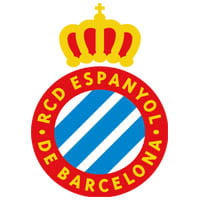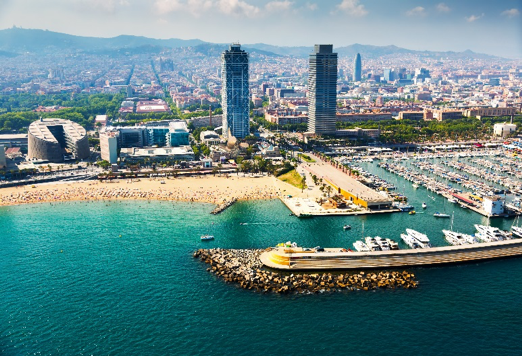Om byen
![shutterstock_785442694]()
Gerard Piqué’s city happens to be one of the most cosmopolitan and avant-garde in Europe. It is also one of the most popular destinations for European tourists, with almost 30 million flocking here every year to laze on its beaches and marvel at its beauty. This puts it at number 4 on the list of most-visited cities in the European Union. It’s not hard to figure out why, given its rich cultural heritage, gastronomy, balmy temperatures and permanent holiday atmosphere.
Barcelona: following in the steps of Gaudí
The capital of Catalunya has a particularly rich patrimony, and is dominated by the colourful, phantasmagorical architectural works of Gaudí. The medieval buildings of the Barrio Gótico, the grand boulevards of the modernist Eixample and the traditional village feel of Gràcia all exert a powerful charm that draws visitors year on year.
Where to start exploring the city’s artistic and architectural wonders?
An obligatory stopping point is the Sagrada Familia (Metro L2 and L5, Sagrada Familia stop), Gaudí’s Gothic-influenced cathedral and great emblem of the Catalan capital. It is saturated with symbols worked in superb detail, its basilica endlessly enthralling to behold. The project is so enormous that it still isn’t finished 120 years after the first stone was laid. Word is that it’s almost done now – but don’t hold your breath!
![shutterstock_305364611]()
About fifteen minutes walk away you’ll find another Gaudí work, the Casa Milà (metro L3 and L5, Diagonal stop), commonly known as “La Pedrera”. It is a monumental work of Catalan modernism dating from the beginning of the 19th century, and has a deserving place on the UNESCO World Heritage list. So does the eccentric Parc Güell (bus 24 and 92), another Gaudí creation which is without doubt the most visited park in the city.
Don’t worry – if architecture isn’t your thing, there are plenty of other treasures to discover. Lovers of surrealism and cubism should take themselves to the Fondation Joan Miró and the Pablo Picasso Museum, which display the works of the two of Spain’s greatest painters.
Eating out in Barcelona
While you’ll find all the classic Spanish dishes here, Catalunya has a reputation for producing the country’s best cuisine. Between tradition and innovation Catalan gastronomy balances the homely and comforting with the frankly surprising.
If you like tapas, we strongly recommend going to Bar Cañete situated on Carrer de la Unió, an adjacent street to the famous Ramblas (metro L3, Liceu stop). Alternatively, at a more affordable price, sample the tapas of d’E58 on the Rambla de Poblenou (metro L4 Poble Nou or Llacuna stops).
Several Basque establishments also offer a vast selection of lip-smacking “pintxos”. The best can be found at Euskal Etxea, in the heart of the Born area (metro L4 Jaume I or Barceloneta stops).
![shutterstock_519793093]()
Shopping under the sun
Did you know that Zara, Mango, Desigual, Massimo Dutti and Springfield are all Spanish? While not all of them are Catalan, their collections display a particular type of elegance shared by the entire Iberian Peninsula.
The Passeig de Gràcia (metro L2, L3 and L4, Passeig de Gràcia stop), like the French Champs-Elysées, hosts the luxury boutiques of the great European and international fashion houses. Gucci, Hermès, Louis Vuitton, Prada, Stella McCartney, Jimmy Choo – a veritable paradise if your wallet is well padded!
On the Carrer de Pelai you’ll find classic ready-to-wear fashions, including Bershka, Stradivarius, Zara, C&A, Celio, and Mango. One advantage is that they are all concentrated on the same street. Another main shopping avenue is the Portal de l’Àngel which has many of the above-mentioned shops, as well as Benetton, Massimo Dutti, El Corte Inglés, H&M, Pull&Bear, Levi’s, Desigual, Intimissimi, Jack&Jones and Women’s Secret. These commercial arteries branch off from the Plaça Catalunya (metro L1 and L3, Plaça Catalunya stop), around which many other brands have also made their home.
For rainy days (of which there are thankfully few!) you can also feed your addiction in numerous shopping centres. The Diagonal Mar, Les Glòries and Maremagnum centres are among the biggest, but there are plenty of others throughout the city.
In general, both shopping centres and the shops of big international brands are open every day from Monday to Saturday, 10am to 9pm. Independent boutiques often open from 10am to 1.30pm and again from 4.30pm/5pm to 8.30/9pm to make space for the traditional Spanish siesta.
![shutterstock_590361305]()
Getting around in Barcelona
The public transport system in Barcelona is extensive and well connected. A single ticket costs €2.20 and allows you to travel around the centre of Barcelona by bus, metro or tram for 1 hour and 15 minutes.
If you plan to take public transport regularly, it will work out cheaper for you to buy the T 10, a travel card that gives you ten journeys for €10.20 (so about €1 per trip – 50% less than a single ticket!). The card isn’t personalised, so more than one person can share it.
You can use the Hola BCN! travel card for all metro lines, tram lines, TMB buses, and trains (within zone 1), as well as the Montjuïc funicular, for the number of days chosen (2, 3, 4 or 5 days), again at very reasonable prices. It can even include a return ticket between the airport and the city-centre.
The Barcelona metropolitan transport website, TMB, enables you to find the best route for your journey, as well as consult an interactive map of public transport, the timetable of each line, and, even better, get status updates.
![shutterstock_244855993]()
Barcelona at night
Barcelona is lively both day and night and is often ranked among the top European party cities. Catalans eat late, drink late and go out late. Don’t be surprised to find restaurants still shut at 8pm, bars empty at 9pm and clubs with doors closed at midnight!
In the happening neighbourhoods of the Born and Barrio Gótico, as well as in the edgier Raval, you’ll find many tapas bars and lively cocktail bars. The atmosphere is young, vibrant and relaxed. In the more eccentric Gràcia, you’ll find more intimate, boho-arty locales, while Poble Nou is populated with large nightclubs and bars attracting indie rock fans. Villa Olímpica on the seafront hosts a number of trendy lounge bars and clubs with open-air sections.
![shutterstock_190674179]()
Our recommendations
- The Caribbean Club (Raval, metro L1 and L3 Catalunya stop) located in the warren of the Raval district. Decent prices and excellent cocktails.
- El Bosc de les Fades (Barrio Gótico, metro L3 Drassanes stop): a highly unusual bar filled with trees and fairies to create a world of enchantment.
- Razzmatazz (Ciutadella / Vila Olímpica, metro L4 Bogatell or Poble Nou stops and L1 Marina stop) is a gigantic complex which combines a main concert venue with a multi-room club. Its cutting edge programming draws fans of all types of electronic music, from electro pop to tech house.
- The Apolo (Poble Sec, metro L2 and L3 Parallel stop) is a concert venue and über cool club where top DJs and the crème de la crème of the international indie-rock scene come to perform. There are very popular theme nights on Mondays (“Nasty Monday”), Tuesdays (“Crappy Tuesday”) and Wednesdays (“Cupcake 80”).
- The Macarena (Barrio Gótico, metro L3 Liceu or Drassanes stop) is an intimate club which specialises in underground electro. It’s free entry for women, and is about €5 for men.




